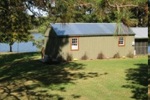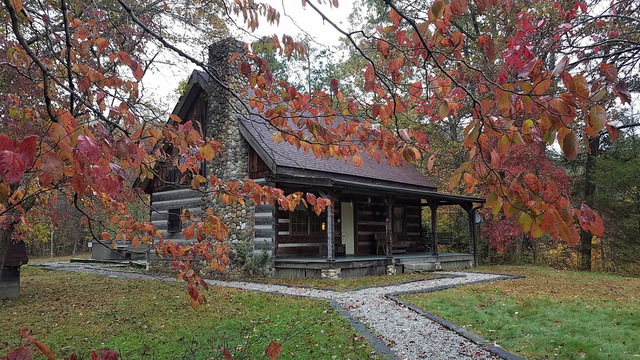HOCKING HILLS STATE PARK
HOCKING HILLS STATE PARK19852 OH-664
Logan, Ohio 43138
(lat:39.435 lon:-82.5427)

Phone: 740 385-6842
Reservations: 866-644-6727
Hocking Hills provides a variety of recreational opportunities in a splendid natural setting. Towering cliffs, waterfalls and deep hemlock-shaded gorges lure the hiker and naturalist and serve as a backdrop to popular facilities and accommodation.
The natural history of this region is as fascinating as the caves are beautiful. Here, in these sandstones and shales, one can read Ohio's history from the rocks. The scenic features of the six areas of the Hocking Hills State Park complex are carved in the Blackhand sandstone. This bedrock was deposited more than 350 million years ago as a delta in the warm shallow sea which covered Ohio at that time. Subsequent millions of years of uplift and stream erosion created the awesome beauty seen today.
The sandstone varies in composition and hardness from softer, loosely cemented middle zone to harder top and bottom layers. The recess caves at Ash Cave, Old Man's Cave and Cantwell Cliffs are all carved in the softer middle zone. Weathering and erosion widened cracks found in the middle layer of sandstone at the Rock House to create that unusual formation.
Other features of the rock include cross-bedding, honeycomb weathering and slump blocks. The first is noticeable as diagonal lines in the rock intersecting horizontal ones. It is actually the cross section of an ancient sand bar in the delta and was caused by changing ocean currents. Honeycomb weathering looks like the small holes in a beehive comb. They are formed by differential weathering which comes about when water, moving down through the permeable sandstone, washes out small pockets of loosely cemented sand grains. Finally, the huge slump blocks of rock littering the streams tumble from near by cliffs when cracks widen to the extent that the block is no longer supported by the main cliff.
Although the glaciers never reached the park areas, their influence is still seen here in the form of the vegetation growing in the gorges. The glaciers changed the climate of all Ohio to a moist, cool environment. Upon their retreat, this condition persisted only in a few places such as the deep gorges of Hocking County. Therefore, the towering eastern hemlocks, the Canada yew and the yellow and black birch tell of a cool period 10,000 years ago.
The hollows and caves of the park complex have long attracted the peoples of Ohio. Evidence of the ancient Adena culture illustrates man first inhabited the recesses more than 7,000 years ago.
In the mid 1700's several Indian tribes traveled through or lived here including the Wyandot, Delaware and Shawnee. Their name for the river from which the park gets its name was Hockhocking of "bottle river." The name comes from the bottle-shaped valley of the Hocking River whose formation is due to its one-time blockage by glacial ice.
After the Greenville Treaty of 1795, Numerous white settlers moved into the region and Hocking County was organized in 1818. The area around the parks began to develop in 1835 when a powder mill was built near Rock House and a grist mill was constructed at Cedar Falls.
The cave areas were well-known as scenic attractions by 1870. In 1924, the first land purchase by the state was made to preserve the scenic features. This first parcel of 146 acres included Old Man's Cave. Subsequent purchases built acreage while the areas existed under the Department of Forestry as State Forest Parks. The Department of Natural Resources was created in 1949 and the new Division of Parks assumed control of the Hocking Hills State Parks assumed control of the Hocking Hills State Park complex which today includes the six park areas. A dining lodge and cottages were opened in 1972. These cottages, together with a campground, provide overnight facilities in one of the most beautiful areas of our state.





